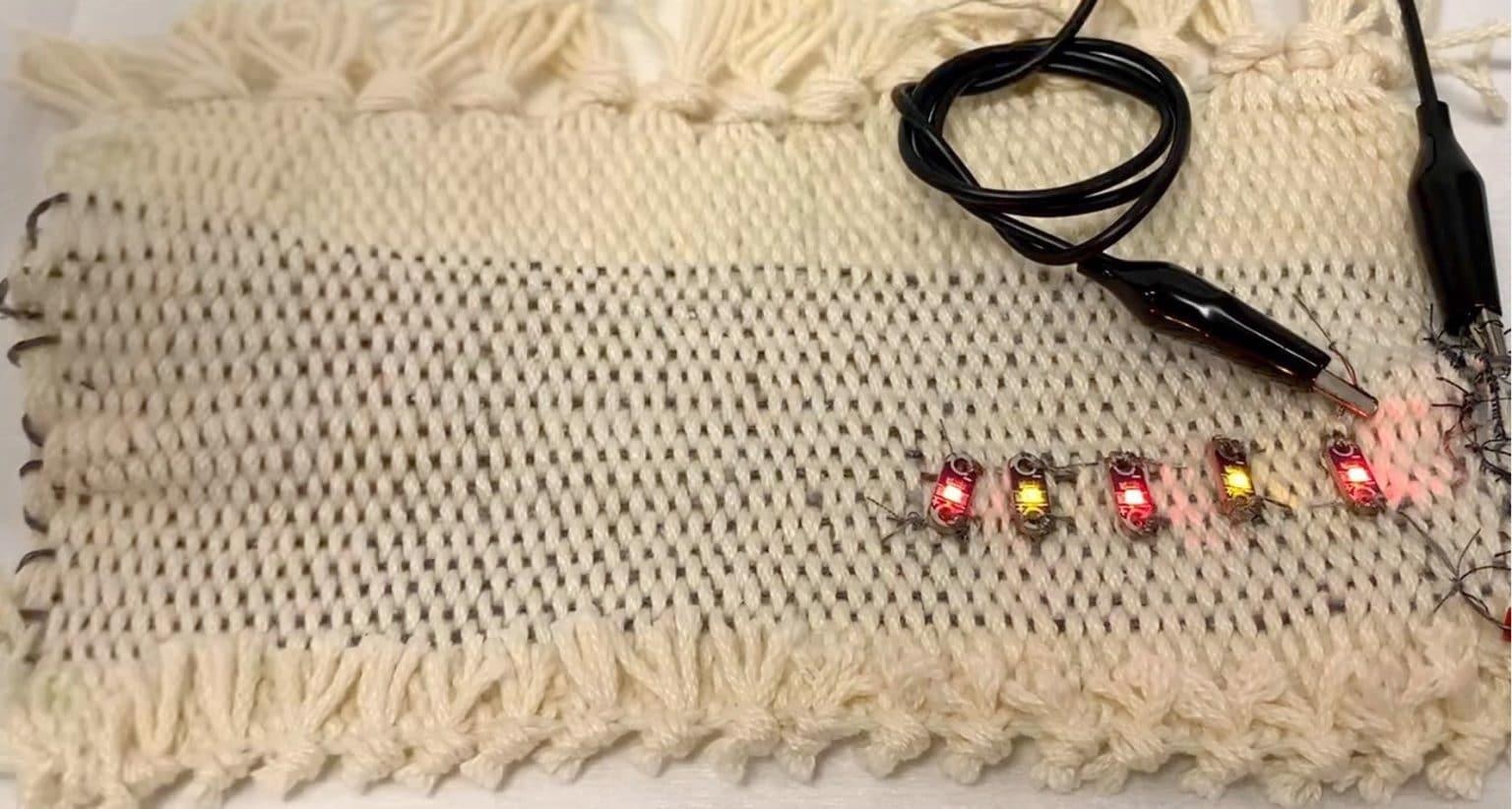Researchers from North Carolina State University have discovered a solution to prevent electrical faults in yarns that have been designed to store electrical energy. The results, published in a recent study, may eventually aid in the creation of “smart textiles” that gather energy from the wearer’s movements and incorporate power sensors and wearable technology.
 Supercapacitor yarns integrated into fabric for powering LEDs. Image Credit: Nanfei He.
Supercapacitor yarns integrated into fabric for powering LEDs. Image Credit: Nanfei He.
The researchers noted in npj Flexible Electronics that by covering yarns with an insulating thread, they were able to stop short-circuiting in supercapacitors (electrical devices that store energy). They also examined the yarns’ performance and toughness to ensure that they would continue to function after going through the knitting and weaving operations.
A supercapacitor functions like a battery, but in this case, we’re working on a flexible battery shaped as a textile yarn that you could weave or knit into your T-shirt or sweater. In this study, we have woven this yarn into a piece of fabric so that it can store electrical energy, and eventually we want to use it to power whatever electronic devices you need, whether it be a sensor, a light or even a cell phone.
Wei Gao, Associate Professor and Faculty Scholar, Textile Engineering, Chemistry and Science, North Carolina State University
While investigations into “yarn-shaped supercapacitors” is interesting, researchers say there is a constant problem with their design: yarn-shaped supercapacitors are more prone to short circuit as their length increases. When an electric current flows in an unanticipated channel, it is called short-circuiting. A short circuit might generate a burst of heat energy or perhaps a fire, which is a safety hazard.
Everybody is trying to make smart electronics that can be incorporated into cloth or fabric. What we found is if you try to make a supercapacitor yarn longer than 8 inches, it’s pretty easy for this device to short-circuit. It’s pretty dangerous, and it’s something nobody wants to encounter when wearing a smart suit.
Wei Gao, Associate Professor and Faculty Scholar, Textile Engineering, Chemistry and Science, North Carolina State University
To address this issue, the researchers investigated what would happen if the super-capacitor yarn electrodes were coated in insulating threads. The threads were supposed to operate as a physical barrier, preventing short-circuiting by prohibiting the opposing electrodes from touching each other.
By attaching the electrodes to a power supply and recording the device’s latest response, they were able to assess its performance. They also put the yarns to the test to see how well they could hold a charge. After charging and discharging the yarns 10,000 times, researchers discovered that they retained 90% of their initial energy.
By integrating their yarn-shaped supercapacitors into a fabric, the scientists were able to assess if they could endure twisting and stretching.
The yarns need to be flexible and strong enough so that when you bend, stretch and press them, they keep their original electrical performance after all of those mechanical deformations. The yarns all kept their original performance, even after going through weaving and knitting.
Nanfei He, Study Lead Author and Postdoctoral Research Scholar, Textile Engineering, Chemistry and Science, North Carolina State University
The yarn-shaped supercapacitor was created using traditional textile production techniques, according to the researchers.
“All of these processes can be scaled up very easily,” He added.
The researchers plan to make their idea into a garment and try to assimilate it with additional energy-generating products in the future.
“Materials innovation and process engineering are critical to the scalability and device performance,” said Feng Zhao, CEO of Storagenergy Technologies Inc., the industrial partner of the project. “We have developed a process to produce thousands of meters of high-performance yarns in a continuous manner,” Zhao added.
Journal Reference:
He, N., et al. (2022) Separator threads in yarn-shaped supercapacitors to avoid short-circuiting upon length. npj Flexible Electronics. doi.org/10.1038/s41528-022-00150-2.